
Introduction :
Biodiversity is the variety of life in an area which is determined by the number of various species in that area. Biodiversity contributes to the health of the biosphere and increases the stability of an ecosystem. The separation of an ecosystem into small pieces of land is known as habitat fragmentation. Edge effects are various environmental situations that occur along the boundaries of an ecosystem.
Answer to Problem 21A
Correct answer :
The correct answer is option (A) A.
Explanation of Solution
Explanation/justification for the correct answer :
Option (A) A. The image of habitat A naturally supports the greater amount of biodiversity because, the habitat A is not disrupted by roads like habitat B. The smaller habitat size has the greater percentage of the habitat which is subject to edge effect. The edge effect of habitat B is greater than habitat A. So, the correct answer is option (A).
Explanation for incorrect answer :
Option (B) B. The habitat size of image A is equal to the habitat size of image B. But in the image B the habitat has more patches that lead to edge effects. Therefore, the areas of habitat B become less. In a big area we can be able to see more biodiversity. So, this is an incorrect option.
Option (C) A and B equally. The habitat size of A and B is equal but the impact of edge effect on habitat B is more that habitat A. Therefore, the biodiversity of habitat A is greater than the habitat B. So, this is an incorrect answer.
Option (D) Neither A or B. The habitat A naturally supports the greater amount of biodiversity than habitat B. So, this is an incorrect answer.
Chapter 5 Solutions
EP BIOLOGY 2012-STUDENTWORKS ONLINE
Additional Science Textbook Solutions
Biology: Life on Earth (11th Edition)
Microbiology: An Introduction
Human Anatomy & Physiology (2nd Edition)
Genetic Analysis: An Integrated Approach (3rd Edition)
Anatomy & Physiology (6th Edition)
Introductory Chemistry (6th Edition)
- "Which of the following about transposable elements (TEs) is false?" RNA transposons move using an RNA intermediate. DNA transposons make up 3% of the human genome but are disruptive. Genes can move within the same chromosome via TEs. The Drosophila P element can only move in germline cells. Can you explain each answer choices pleae?arrow_forwardWhat will control the rate of bioremediation of petroleum? (Choose all correct answers) The availability of the petroleum The temperature of the water The availability of oxygen The percent of the population that has degraded petroleum in the pastarrow_forwardWhich of the following would lead to a false negative result in a sandwich ELISA (the lab manual refers to this as a direct ELISA- also known as search for antigen)? Mark all correct answers. antibody was non-specific and bound to something other than the antigen of interest. too short of a duration when incubating the reagents in the plate. If there are multiple strains of the pathogen of interest and the antibody does not recognize one of the strains. Did not sample the correct bodily fluid/area to detect the antigen concentration of antigen was too low to detect in the patient sample. inadequate washing was performed after the enzyme linked antibody was allowed to bind. substrate was exposed to too much light reusing a pipette that was used to pipette a positive sample.arrow_forward
- S. +1269 pts /1500 © Macmillan Learning 0 Resources Solution Penalized Feedback Try Again Draw the final product with stereochemistry and lone pairs. The leaving group has been pre-drawn for your convenience. +100 +100 : 0: + H,C- :0: : 0 0 : +100 +94 possible ✓ +100 K Attemparrow_forward+1269 pts /1500 © Macmillan Learning t/1188d950-dd73-11e0-9572-0800200c9a66/3045511b-267e-4a00-86ca-85dbc62ecb4e/6ac3a0c9-... a □ 出 All Bookmarks Due: Mon, May 26 Resources Solution Penalized Feedback Try Again KX Attempt 3 Draw the final product with stereochemistry and lone pairs. The leaving group has been pre-drawn for your convenience. :0: + нс H,C- :0: : 0:arrow_forwards. +1169 pts /1500 © Macmillan Learning 0 Resources Hint Submit Answer Step 3: This tertiary carbocation intermediate readily undergoes elimination with any weak base to form two possible products. + + H :0: H +94 possible 3a) Draw the minor organic product of elimination. Select Draw Templates More +100 +95 possible # C Major product + Minor product 3b) Draw the major organic product of elimination. Erase Select Draw Templates More C Erasearrow_forward
- Explain the Science & Society on (with links and pictures): ---- Question down below Discuss the ethical, medical, and societal implications of using advanced genetic techniques?arrow_forwardExplain the Disease Mechanism & Impact on (with links and pictures): What causes Leigh Syndrome and why it's so deadly. Which cellular functions, organelles (especially mitochondria), and macromolecules are involved.arrow_forwardExplain the Disease Mechanism & Impact on (with links and pictures): What's going wrong inside the cell and the effects on the human body. Describe metabolism with an emphasis on cellular respiration.arrow_forward
- Explain the Disease Mechanism & Impact on (with links and pictures):arrow_forwardExplain the Science & Society on (with links and pictures): Discuss the ethical, medical, and societal implications of using advanced genetic techniques.arrow_forward↑ LED Tt O Tt e 0 ✓ B > FLORES DIology Second Semester Review 7. Chi Square Analysis: wild dumpy male x ebony wild female F1: All wild wild F2: 142 wild wild males 52 wild ebony males 46 dumpy wild males 17 dumpy ebony males 151 wild wild females 47 wild ebony females 51 dumpy wild females 8 dumpy ebony females What pattern of inheritance is observed for body color? Autosomal recessive Autosomal dominant Sex-linked recessive Sex-linked dominant What are the genotypes of the parents in the P generation? a. XBYdd x XbXbDD b. Bbdd x bbDd c. BBdd x bbDD d. BBX Y x bbXDY How many flies in the F2 generation would you expect to express the dumpy wild phenotype? a. 289.125 b. 97 c. 96.375 d. 293arrow_forward
 Human Anatomy & Physiology (11th Edition)BiologyISBN:9780134580999Author:Elaine N. Marieb, Katja N. HoehnPublisher:PEARSON
Human Anatomy & Physiology (11th Edition)BiologyISBN:9780134580999Author:Elaine N. Marieb, Katja N. HoehnPublisher:PEARSON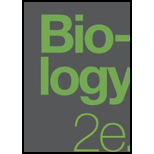 Biology 2eBiologyISBN:9781947172517Author:Matthew Douglas, Jung Choi, Mary Ann ClarkPublisher:OpenStax
Biology 2eBiologyISBN:9781947172517Author:Matthew Douglas, Jung Choi, Mary Ann ClarkPublisher:OpenStax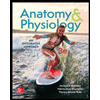 Anatomy & PhysiologyBiologyISBN:9781259398629Author:McKinley, Michael P., O'loughlin, Valerie Dean, Bidle, Theresa StouterPublisher:Mcgraw Hill Education,
Anatomy & PhysiologyBiologyISBN:9781259398629Author:McKinley, Michael P., O'loughlin, Valerie Dean, Bidle, Theresa StouterPublisher:Mcgraw Hill Education,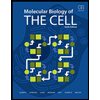 Molecular Biology of the Cell (Sixth Edition)BiologyISBN:9780815344322Author:Bruce Alberts, Alexander D. Johnson, Julian Lewis, David Morgan, Martin Raff, Keith Roberts, Peter WalterPublisher:W. W. Norton & Company
Molecular Biology of the Cell (Sixth Edition)BiologyISBN:9780815344322Author:Bruce Alberts, Alexander D. Johnson, Julian Lewis, David Morgan, Martin Raff, Keith Roberts, Peter WalterPublisher:W. W. Norton & Company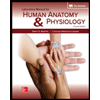 Laboratory Manual For Human Anatomy & PhysiologyBiologyISBN:9781260159363Author:Martin, Terry R., Prentice-craver, CynthiaPublisher:McGraw-Hill Publishing Co.
Laboratory Manual For Human Anatomy & PhysiologyBiologyISBN:9781260159363Author:Martin, Terry R., Prentice-craver, CynthiaPublisher:McGraw-Hill Publishing Co.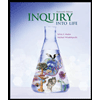 Inquiry Into Life (16th Edition)BiologyISBN:9781260231700Author:Sylvia S. Mader, Michael WindelspechtPublisher:McGraw Hill Education
Inquiry Into Life (16th Edition)BiologyISBN:9781260231700Author:Sylvia S. Mader, Michael WindelspechtPublisher:McGraw Hill Education





